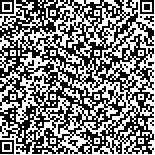| 引用本文: |
李凯庆, 夏雪, 蔡宏波, 蔡宏宇, 马洪滨, 白智鹏, 高一然, 佟颖.国医大师孙申田“形气神一体观”指导下经颅重复针刺刺激疗法的临床应用经验[J].湖南中医药大学学报,2024,44(9):1557-1562[点击复制] |
|
| |
|
|
| 本文已被:浏览 452次 下载 148次 |
| 国医大师孙申田“形气神一体观”指导下经颅重复针刺刺激疗法的临床应用经验 |
| 李凯庆,夏雪,蔡宏波,蔡宏宇,马洪滨,白智鹏,高一然,佟颖 |
| (黑龙江中医药大学, 黑龙江 哈尔滨 150040;黑龙江中医药大学附属第一医院, 黑龙江 哈尔滨 150040;哈尔滨市中医医院, 黑龙江 哈尔滨 150020;大庆油田总医院, 黑龙江 大庆 163001;黑龙江省海员总医院, 黑龙江 哈尔滨 150025) |
| 摘要: |
| 国医大师孙申田教授在长期的临床实践和科研探索中,依据“形气神一体观”理论指导针刺。孙申田教授强调,针刺以调神为要,宁神定志;以调气为本,神明畅达;以全形为载体,形神同调。孙申田教授认为,针刺每获良效的关键在于手法的刺激及刺激量的累积。在“形气神一体观”指导下,孙申田教授提出了经颅重复针刺刺激疗法(repetitive transcranial acupuncture stimulation, rTAS)。通过选取百会、宁神、情感区调节脑神,以总督;选取神门、内关调节心神,以宁神。对头部诸穴施以rTAS,积累有效刺激量,以透传颅骨,通达病所。探讨孙申田教授在“形气神一体观”指导下rTAS的临床应用,并结合典型案例加以阐明,以期为中医针灸学领域带来新的治疗思路和方法。 |
| 关键词: 形气神一体观 经颅重复针刺刺激疗法 肠易激综合征 不宁腿综合征 学术思想 孙申田 |
| DOI:10.3969/j.issn.1674-070X.2024.09.001 |
| 投稿时间:2024-02-28 |
| 基金项目:孙申田国医大师学术思想及临床经验研究-黑龙江省中医药科研项目(ZHY2023-164)。 |
|
| Clinical application experience of repetitive transcranial acupuncture stimulation therapy under the guidance of "the integration of form, qi, and spirit" by National TCM Master SUN Shentian |
| LI Kaiqing, XIA Xue, CAI Hongbo, CAI Hongyu, MA Hongbin, BAI Zhipeng, GAO Yiran, TONG Ying |
| (Heilongjiang University of Chinese Medicine, Harbin, Heilongjiang 150040, China;The First Hospital of Heilongjiang University of Chinese Medicine, Harbin, Heilongjiang 150040, China;Harbin Hospital of Chinese Medicine, Harbin, Heilongjiang 150020, China;Daqing Oilfield General Hospital, Daqing, Heilongjiang 163001, China;Heilongjiang Seamen's General Hospital, Harbin, Heilongjiang 150025, China) |
| Abstract: |
| In his long-term clinical practice and scientific research, National TCM Master, Professor SUN Shentian guided acupuncture based on the theory of "the integration of form, qi, and spirit". He emphasizes that acupuncture should focus on regulating the spirit and calming the mind; sets regulating qi as the basis to soothe the spirit; and uses the whole body as a carrier to make the form and spirit in harmony. Professor SUN believes that the key to the good effect of acupuncture lies in manipulation and the amount of stimulation. Under the guidance of "the integration of form, qi, and spirit", Professor SUN proposed the method of repetitive transcranial acupuncture stimulation (rTAS). He selects Baihui (GV2), Ningshen (Extra), and other emotional areas to regulate the spirit; and selects Shenmen (HT7) and Neiguan (PC7) to regulate the mind and calm the mind. rTAS is applied to various acupoints on the head, so as to accumulate effective stimulation to penetrate the skull and finally reach the diseased area. This article aims to explore the clinical application of rTAS under the guidance of "the integration of form, qi, and spirit" by Professor SUN Shentian, and it illustrates the process with typical cases, so as to bring new treatment ideas and methods to the field of Chinese acupuncture. |
| Key words: the integration of form, qi, and spirit repetitive transcranial acupuncture stimulation irritable bowel syndrome restless legs syndrome academic thought SUN Shentian |
|

二维码(扫一下试试看!) |
|
|
|
|




